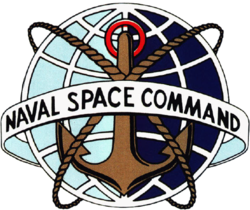Some Naval Officers Believe That The Navy Should Oversee The Newly Proposed Space Corps
Last week I wrote a post about new legislation in the U.S. House of Representatives calling for the addition of a Space Corps to the U.S. military. The bill proposing the new Space Corps would have the Air Force host the new branch, much as the Navy hosts the Marine Corps. However, it turns out that some naval officers are taking exception to the proposal because they think that the Navy should be the host for the Space Corps.
Opponents of the Space Corps being formed under the Air Force point out that long space missions on manned spacecraft would be more like operations on ships at sea than flights of aircraft. Space stations that provide fuel and supplies and rotate crews on spaceships would be like floating staging bases now used by the Navy to supply fleets of ships.
Some critics have pointed out that the Navy is used to thinking in two dimensional terms. The supporters of the Navy refute that by pointing to the three dimensional movement of submarines and Navy planes. The supporters say that the Space Corps will have to combine the naval mentalities needed for surface, subsurface, land and air warfare to answer threats and deal with navigation hazards in Earth orbit and beyond.
Up until 2002, the Navy had the Naval Space Command. This branch of the Navy controlled space surveillance satellites, advocated for naval warfighting requirements, and advised the Navy on the production of space plans and training. The U.S. Navy Space Surveillance System (SPASUR) included a chain of radar stations across the U.S. Southwest that could detect anything as small as a basketball in Earth orbit. Following the decommissioning of the NSC, the Air Force took over control of SPASUR.
Even though the NSC has been decommissioned, that has not ended the involvement of the Navy in space. The Arleigh Burke class of guided missile destroyers employs the Aegis Combat System and the SPY- 1D multifunction passive electronically scanned array radar. They are able to detect and engage ballistic missiles in space. Supporters of the Navy’s claim to the new Space Corps say that the Navy has the culture and capability to integrate space-based missions and space-compatible concepts into its global system.
Modern Naval command installations such as an AEGIS Combat Information Center or the integrated fighting bridge of an Independence Class littoral combat ship resemble the imaginary bridges of spaceships in science fiction movies and TV shows. Popular shows such as Star Trek, Battlestar Gallactica, and popular games such as HALO and Warhammer 40k recognize the natural fit of the naval systems of today with the planned spacecraft of tomorrow.
It is obvious that the military will have to move into space despite the international treaties that ban the militarization of space. Supporters of the Navy say that the Air Force is the wrong choice to host the proposed Space Corps. They say that the U.S. Navy and not the U.S. Air Force “has the crew mentality, operational perspective, and leadership culture compatible with our long-term space needs.”
